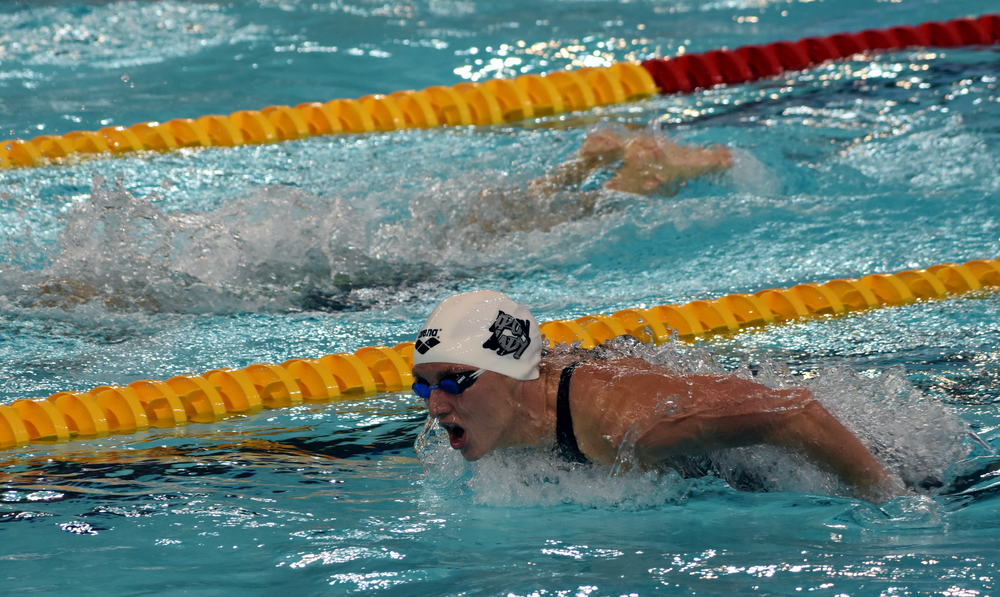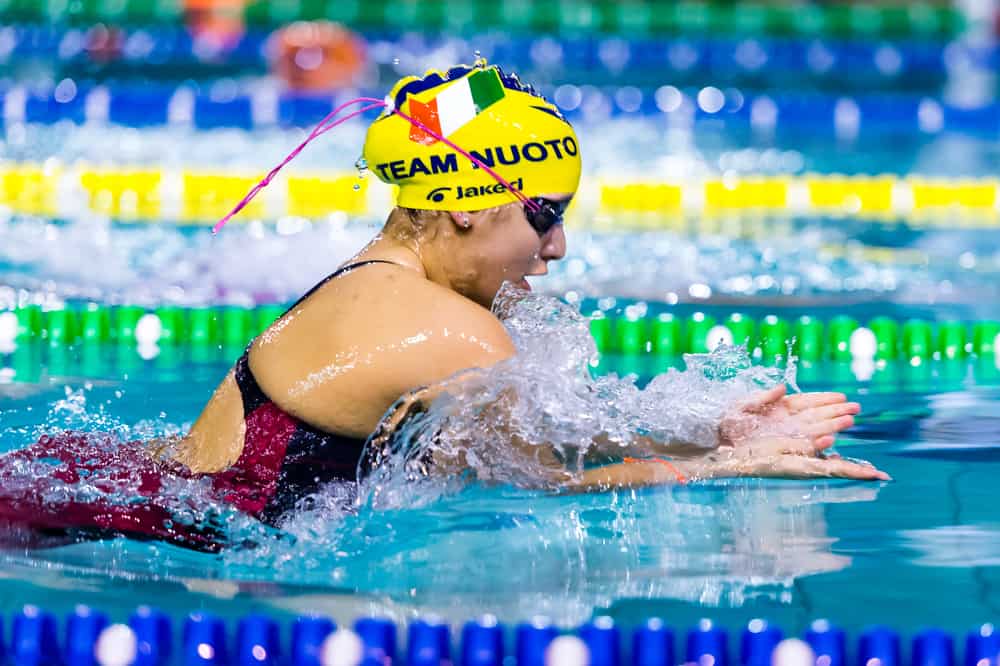One way to build endurance for breaststroke is to swim at a constant pace for a more extended time. You can also try swimming sprints or intervals, which will help improve your speed and stamina. You can also add resistance by wearing a weight belt or swimming against a current.
Whatever method you choose, be sure to focus on your breathing and conserve your energy. Swimming can be a strenuous activity, so taking breaks and allowing your body to recover is essential.

Here are some tips on how to build endurance for this particular style:
- Swim at a constant pace for a more extended time
- Sprint or swim intervals
- Wear a weight belt
- Focus on your breathing
- Take breaks when needed
- Recover properly
If you follow these tips, you’ll be on your way to swimming breaststroke with more endurance in no time.
Table of Contents
How do I increase my stamina for swimming?

Swimming is a great exercise to improve cardiovascular fitness and overall health, but it can be challenging to maintain stamina if you’re not used to swimming long distances.
Here are some tips to help you increase your stamina for swimming so that you can swim longer and faster with less fatigue.
- Train regularly. The best way to increase your stamina for swimming is to train regularly, preferably 3-4 times per week. Swimming laps at a consistent pace will help your body become more efficient at using oxygen and energy, so you can swim for more extended periods without tiring as quickly.
- Incorporate interval training. Interval training is a great way to challenge your body and improve your stamina for swimming. Incorporate intervals into your workouts by swimming for 1-2 minutes at a comfortable pace, then swimming hard for 30 seconds to 1 minute, and repeating this cycle for the duration of your workout.
- Use a swimming app. There are many great swimming apps available that can help you track your progress and distance and provide tips and motivation to keep you going. Swimming apps can be a great way to stay on track with your training and see improvements in your stamina over time.
- Stay hydrated. It’s essential to stay hydrated when you’re swimming, especially if you’re swimming for long periods. Drink plenty of water before and after your swim, and take breaks as needed to drink more water or catch your breath.
- Eat a healthy diet. Eating a healthy diet is essential for all athletes, but it’s necessary for swimmers because it can help you maintain your energy levels and stamina. Be sure to eat plenty of fruits, vegetables, whole grains, and lean protein to fuel your body for swimming.
- Get enough sleep. Getting enough sleep is crucial for all athletes but is essential for swimmers. Swimming uses a lot of energy, so getting enough rest is necessary so your body can recover. Aim for 8-10 hours of sleep each night.
- Practice relaxation techniques. Learning to relax mentally and physically can help you swim with less effort and improve your stamina. When you’re swimming, focus on your breathing and try to keep your muscles relaxed. You can also practice visualization techniques or meditation to help you relax before your swim.
- Listen to music. Listening to music can help you stay motivated and distracted from fatigue while swimming. Create a playlist of upbeat songs that will keep you moving through your workout.
- Set goals. Setting goals is a great way to stay motivated and focused while improving your stamina for swimming. Choose a distance or time goal to work towards, and track your progress over time to see how you’re improving.
- Be patient. Improving your stamina for swimming takes time and patience. Don’t expect to see results overnight – it may take several weeks or months of consistent training before you see a significant improvement. Stick with it and enjoy the process, and you’ll eventually reach your goals.
Do you have to breathe every stroke in breaststroke?

Swimmers should take a breath every other stroke to avoid feeling lightheaded and dizzy. Keep your head above water when swimming breaststroke, and take a breath every other stroke.
This will help you stay focused and avoid feeling lightheaded or dizzy. If you have any questions about breaststroke, be sure to ask a swim coach or another experienced swimmer for advice.
How to swim without getting out of breath
Swimming is an excellent low-impact exercise that can improve cardiovascular health, increase strength and flexibility, and burn calories. However, for some people, swimming can be challenging because it can be difficult to breathe while swimming.

If you are struggling to breathe while swimming, here are a few tips on how to improve your breathing and make swimming easier:
- Make sure you are taking deep breaths. When swimming, remember to take deep breaths in through your nose and out through your mouth. This will help you get more oxygen and make it easier to breathe.
- Try using a nose clip. A nose clip can help keep your airways open and make breathing easier while swimming.
- Pace yourself. Swimming at a slow pace can help you avoid getting out of breath.
- Take breaks if needed. If you need to take a break, don’t be afraid to stop and catch your breath. Make sure you return to the pool as soon as possible to enjoy all the benefits of swimming!
The difference between stamina and endurance
Stamina is the ability to maintain a high energy level and performance for a sustained time. At the same time, endurance is the ability to resist fatigue and continue exercising or competing over time.

While both stamina and endurance are essential for swimming, they have different benefits. For example, someone with good energy might swim at a fast pace for a long distance, while someone with good endurance might swim at a slower pace for a more extended time.
If you want to improve your swimming performance, focusing on both stamina and endurance is essential. Here are some tips to help you do just that:
- Swim at a variety of speeds and distances.
- Incorporate interval training into your swimming routine.
- Use breathing exercises to help improve your endurance.
- Make sure to stay hydrated before, during, and after your swim.
- Focus on your form and technique.
By following these tips, you can help improve your stamina and endurance in swimming, which will, in turn, help you swim faster and for more extended periods. So get out there and start swimming.
